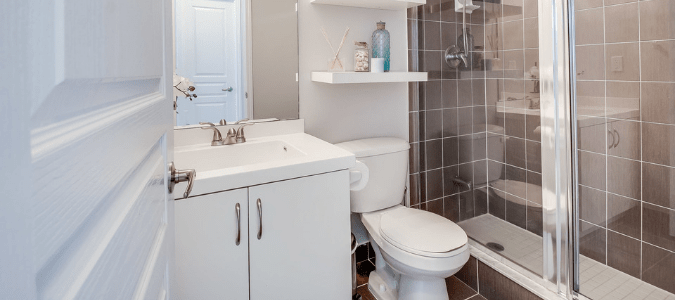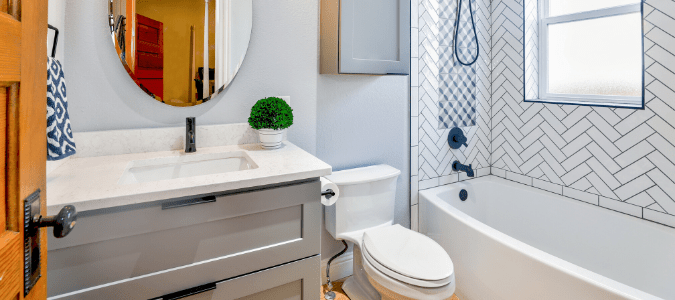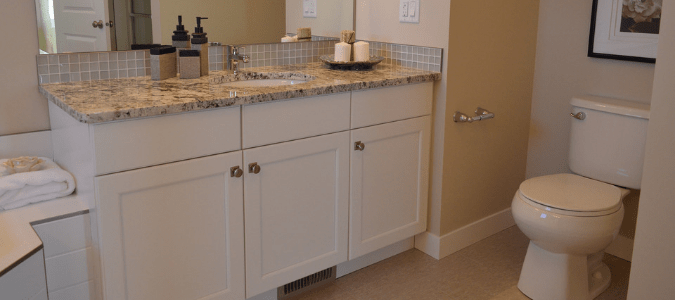We all take our toilets for granted because it’s always there. But we realize its value when we ask, “Why does my toilet keep clogging?” A clogged toilet is frustrating and even embarrassing, especially when you have guests over. Several things can cause this problem, but the usual culprit is excess toilet paper down the drain.
If your toilet keeps clogging, here’s how to troubleshoot the issue and have it running smoothly again. If these solutions don’t work, it’s time to seek the help of the pros. Professional plumbers will diagnose the problem and perform the necessary repairs and replacements.
Reasons Your Toilet Keeps Clogging
Here are the common answers to the question, “Why does my toilet keep clogging?” and how to address these issues.
You Flush Foreign Objects Down the Toilet
Many homeowners think they can get away with flushing various items down the toilet. But, many of these things can cause clogging. Paper towels seem flushable, but they’re highly resistant to tearing even when soaked. Because they don’t break down, they have difficulty passing through the drain pipe. You’ll also see some wipes with “flushable” on their labels. But, they can cause massive plumbing problems.
Fortunately, you can clear most toilet clogs with a plunger by pushing it down the main sewer line. An alternative is to break up the clog with a toilet auger. However, clogs will keep happening unless you and your family develop better habits. Have trash cans in every bathroom and encourage all family members to use them for anything other than toilet paper.
Blocked Toilet Trap
Toilets come with either an S-trap or a P-trap. When you flush, not all the water goes to the sewer. Some of it stays in the toilet trap, creating a seal that stops waste, foul sewage smells and hazardous gases from entering your home. However, these traps are where blockages can occur. When you flush too much debris down the bowl, it can accumulate in the toilet trap. Your toilet may still function if it’s just a partial blockage, but the water will drain much slower. It will eventually turn into a full-blown clog and flood your bathroom floor.
A toilet plunger will come in handy for this situation. It will force the blockage through the toilet trap and into the main drain. If that doesn’t work, you can use a toilet auger to break the clog and help it pass through.
Blocked Plumbing Vents
Not many homeowners know that the plumbing system in their homes have ventilation pipes. They play a crucial role within the structure, equalizing pressure and preventing water from flowing out of the drain traps. They also let clean outside air enter the system to create a suction effect, boosting your toilet’s flushing power. But, like regular pipes, the plumbing vents can become clogged.
If you suspect there is a blockage in the plumbing vents, it’s time to reach out to a professional. It’s not unusual for leaves and other foreign objects to fall into the roof vent, but it should be easy for a pro to fish them out.
Restricted or Punctured Main Sewer Lines
The main sewer line runs underground outside your home to the municipal sewage line. While it has protection from rain, snow and other elements, tree roots can damage it. A restricted or punctured main sewer line will impact your home’s plumbing system, either slowing down water drainage or stopping it completely. The damage can worsen when rocks and debris enter the punctured sewer line. When this happens, you’ll have issues with more than one toilet in your home.
Main sewer line problems are beyond any homeowner’s DIY skills. Often, the solution is to use a motorized auger. The situation may even call for a major excavation. The only thing you can do is contact a professional and leave the work to them.
Your Water-Conserving Toilet Is Ineffective
Getting low-flow toilets for your home is an effective way to reduce wastage and lower your water bill. However, they’re prone to clogging because they use less water for flushing. When you notice that your toilet won’t flush all the way, it’s easier for waste and toilet power to get stuck in the drainpipe.
This issue is more common in older-generation low-flow models. It’s worth upgrading if the problem keeps happening. But if you’d rather not spend money on a more advanced toilet, limit the amount of waste and toilet paper you flush down.
Most toilet clogs are fixable with a plunger. If these tools don’t work, it’s time to let a plumber take over. It means there’s a more severe underlying problem that requires the skills and experience of a plumbing professional.
What to Do When There Is a Slow Water Leak in the Toilet Bowl
Sometimes, toilet leaks are noticeable, and homeowners can easily catch them. But, other times, they are slow and sneaky and will cause bigger damage before you even realize they are there. If your water bill is significantly higher than usual, that’s one indication of a leak. Here’s what you can do to address the situation.
Replace the Flapper
The flapper, the seal between the tank and the bowl, is one of the most common culprits behind slow leaking. To see if it’s causing the leak, turn off the water, drain the tank and inspect it for damages.
Replace the Fill Valve
The fill valve is the part inside the tank that floats as it fills with water, preventing it from overflowing. You might need to replace it if it’s worn out or damaged. This task is often more than a homeowner wants to take on, but a professional plumber has the skills to handle this task.
Replace the Flush Valve
The flush valve is the part that opens when you flush, letting water flow into the bowl. Like the fill valve, it can deteriorate over time. If it’s damaged, it can cause the tank to have an overfilling issue. Unfortunately, replacing it isn’t as straightforward. Replacing your flush valve is a task your plumber can efficiently do.
If you’re experiencing any type of toilet leak, don’t hesitate to contact a professional plumber. The plumber will replace the parts efficiently and have your toilet running smoothly again.
How to Troubleshoot a Toilet Water Supply Line Leak
The supply line is the pipe that connects the toilet to the wall, delivering clean water to the tank and bowl. The water that flows through it is under high pressure, and a leak can develop in various parts of the line. Signs of a leak include puddles behind the toilet and continuous dripping noises in the wall. Never ignore a leaking water supply line because it can lead to severe water damage and costly water bills. Here’s how a professional will troubleshoot the issue:
- Shut off the water supply.
- Identify the cause of the leak. They will start by tightening all the fittings and washers. If this works, the toilet is fixed! But, if not, they will move on to the next steps.
- Then, they will disassemble your water supply line and inspect the fittings, washers and pipes. If any parts are damaged, they will replace them.
- Finally, they will reassemble the water supply line with the new parts. To make sure everything’s working, they will turn on the water and check for any leaks.
Troubleshooting a supply line leak is time-consuming and tedious. If you suspect a water leak at home, it’s best to leave the issue to the capable hands of a professional plumber.
Contact a Professional for Your Toilet Troubles
You don’t have to deal with toilet issues on your own. Contact a professional plumber to come over, assess the situation and provide a long-term solution. You can enjoy toilet time in peace again sans any clogging or leaks.
ABC Can Help With Your Toilet Problems
When dealing with plumbing problems, it’s not worth making a mess yourself. Instead of trying to learn the ins and outs of plumbing, contact ABC Home & Commercial Services. Our licensed professionals can efficiently diagnose and repair any plumbing issue you may have. In cases where a repair isn’t possible, we can help you decide which type of toilet works best for you and then install it.



